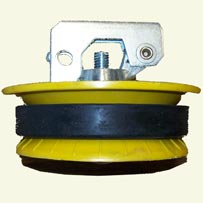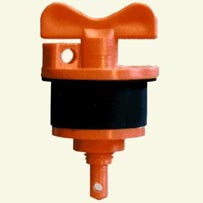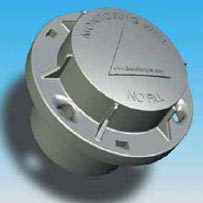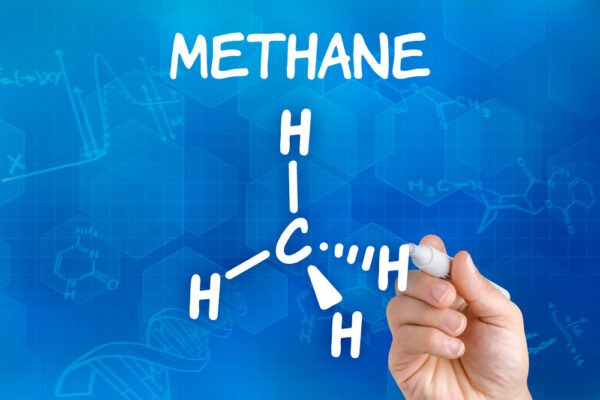Article 3 – Guidance from the EPA
ENVIRONMENTAL LITIGATION, COMPLIANCE AND TRANSACTIONAL COSTS TO INCREASE AS A RESULT OF EPA’S NEW VAPOR INTRUSION GUIDANCE
 Action Item: Vapor intrusion has been a primary concern of state and federal environmental agencies for the past decade, and, accordingly, remedial actions have included vapor migration and intrusion as an exposure pathway. Now, the direction and methods by which to evaluate vapor intrusion have been formalized and enhanced by the EPA’s issuance of new vapor intrusion guidance documents. The EPA’s issuance of these guidance documents will likely increase transactional due diligence costs and litigation costs as well, and states are sure to follow the EPA’s lead in developing formal vapor intrusion investigation guidelines.
Action Item: Vapor intrusion has been a primary concern of state and federal environmental agencies for the past decade, and, accordingly, remedial actions have included vapor migration and intrusion as an exposure pathway. Now, the direction and methods by which to evaluate vapor intrusion have been formalized and enhanced by the EPA’s issuance of new vapor intrusion guidance documents. The EPA’s issuance of these guidance documents will likely increase transactional due diligence costs and litigation costs as well, and states are sure to follow the EPA’s lead in developing formal vapor intrusion investigation guidelines.
On June 11, 2015, the U.S. Environmental Protection Agency (“EPA”) released two technical guidance documents that address assessment and mitigation activities at residential and non-residential sites where vapor intrusion is an actual or potential concern, including sites being investigated under CERCLA and RCRA.
Vapor intrusion refers to the migration of vapors from contaminated subsurface sources, such as groundwater, through soil and into overlying building and structures. Vapor intrusion may be a potential concern at any building located near soil or groundwater contaminated with vapor-forming hazardous materials.
The EPA’s focus on vapor intrusion has grown significantly over the last decade, as has the focus of state regulatory agencies involved in reviewing and directing remedial actions to address releases of hazardous materials. The new guidance documents incorporate the EPA’s current recommendations for identifying, evaluating, and managing vapor intrusion, while providing some flexible technical approaches to accommodate site-specific conditions and circumstances. These guidance documents were intended to promote national consistency in assessing and addressing the vapor intrusion human exposure pathway at contaminated sites. Indeed, many states have been awaiting the publication of these guidance documents before releasing their own state vapor intrusion guidance documents. The two new vapor intrusion guidance documents, which have not yet been published in the Federal Register, supersede and replace the EPA’s 2002 Draft Vapor Intrusion Guidance.
The Technical Guide for Assessing and Mitigating the Vapor Intrusion Pathway from Subsurface Vapor Sources to Indoor Air applies to all sites being evaluated under federal remedial statutes. This guidance document addresses preliminary vapor intrusion assessments, sampling, risk assessments, exposure scenarios, mitigation, and subsurface remediation. The second guidance document, the Technical Guide for Addressing Petroleum Vapor Intrusion at Leaking Underground Storage Tank Sites, addresses sites where vapor intrusion related to petroleum contamination from underground storage tanks is a potential concern. Further, the EPA has a Vapor Intrusion Screening Level (“VISL”) Calculator to assist in identifying applicable screening levels for a particular site.
At sites where vapor intrusion poses a potential or actual hazard to occupants’ health or safety, exposures usually can be prevented or reduced through relatively simple actions, such as changing building pressure and ventilation. In most cases, costs associated with addressing vapor intrusion can be manageable, resulting in what the EPA believes to be long-term benefits, including improved public health and less costly response actions. The EPA believes that these benefits are especially likely when actions are undertaken early.
The new guidance documents, which the EPA will rely upon in connection with response and enforcement, will result in several impacts. First, the EPA’s focus on vapor intrusion will likely increase remedial obligations under CERCLA and other statutes requiring remediation, such as RCRA. Second, due diligence costs associated with transactions that involve the sale, purchase, or leasing of real property are likely to increase as parties involved in those transactions determine that the risks associated with potential vapor intrusion issues warrant investigation and mitigation, which could even include sites where remedial actions have already been implemented and received a “no further action” status if those sites were not previously investigated with “vapor intrusion” as a pathway for exposure. Third, the additional inquiry into the potential for vapor intrusion as set forth in the new guidance documents may result in private party litigation serving to provide plaintiffs with another cause of action by which to claim exposure to vapors from hazardous materials and contaminants, and damages resulting from that exposure. In cases involving properties that have received remedial action approval without any focus on a vapor intrusion pathway, the ability to defend against such litigation may prove difficult.
The new guidance documents and supporting tools can be found by clicking on the following:
- Technical Guide for Assessing and Mitigating the Vapor Intrusion Pathway from Subsurface Vapor Sources to Indoor Air (June 2015) [PDF]
- Technical Guide for Addressing Petroleum Vapor Intrusion at Leaking Underground Storage Tank Sites (June 2015) [PDF]
- Vapor Intrusion Screening Level (“VISL”) Calculator [EXCEL]
- VISL User Guide [PDF]
by Thomas Duncan, Margaret Anne Hill | Blank Rome LLP

Article 4 – Safety Moment
MANAGING PRESSURIZED MONITORING WELLS
Background: Well caps come in a variety of shapes and sizes and function. Most are designed to be water tight, many are gas tight, and some are equipped with gas sampling ports as shown below (http://www.fieldenvironmental.com/supplies-safety1/field-supplies/well-caps-and-id-plugs)




Have you ever removed a cap from an aquifer monitoring well, or at least seen it done? If so, then you probably saw someone doing something very similar to that shown below:
Looks and sounds like a very straightforward, safe procedure, right? Having done this many times ourselves, we thought so too (sure – some wells hissed, samples bubbled and the vapors smelled like Hellfire but we viewed those as good things, from a third-person “microbes” perspective). However, as we consider more carefully issues associated with excessive methanogenesis during remedial actions, practitioners are more mindful of the overall process. Accordingly, we have received multiple reports of incidents and near-misses associated with removing caps or obtaining samples from monitoring wells that have been pressurized as a result of methane build-up.
Issue: During remedial actions using conventional carbon sources and ISCR reagents, methane production can be excessive and the gas can accumulate inside sealed monitoring wells. Looking at the photo again, we can see the proximity of the field technician’s head and face in relation to the monitoring well as he removes the cap or attempts to open a sampling port (i.e., about 2 or 3 ft directly above the well – yellow arrow)
Although protected to the degree that conventional PPE affords (eye protection, gloves, reflective vest, etc) when opening a pressurized well the person is potentially exposed to:
- Water (contaminated) jetting upward from the sampling port;
- Caps themselves being projected upward; and
- Vapors being emitted from the well (contain H2S and VOCs; methane concentrations exceeding 45% have been reported from sites where emulsified carbon sources have been utilized to support ERD)
Lessons Learned: Methane gas generation should be an expected by-product of in situ bioremediation processes, especially those that employ conventional carbon sources that do not actively control methanogens (e.g., substrates such as oils, lecithins, emulsified oils/lecithins, other organic hydrogen donors, conventional ISCR reagents, etc). As such, monitoring points may accumulate methane and other gasses that could lead to pressure build-up inside the wells.
Potential Control Measures:
- When removing caps or collecting samples from any monitoring well, field technicians should anticipate high pressures: do not position yourself above the well and face away from the potential “flight path” or “line-of-fire” when opening the well/sampling port.
- Wells can be fitted with a vented well caps to allow gas to dissipate slowly and prevent pressure build-up. (See http://www.gripnlock.com/excap.html). Air monitoring for flammable and toxic gases may be required.
- Methane control technologies such as Provect-CH4™ or antimethanogenic remedial amendments such as those offered by Provectus Environmental Products, Inc. (Provect-IR™, Provect-IRM™, ABC-CH4™, EZVI-CH4™) can be used to help manage excessive methanogenesis during in situ remedial actions.
- Field technicians may opt to wear impact-resistance, face shields. (See http://www.fieldenvironmental.com/supplies-safety1/health-and-safety/protective-wear/universal-face-shield-for-hard-hats.html)
- Share your other recommendations by emailing us at [email protected], or contacting our office at (815) 650-2230.




